Indiana Medical History Museum
We recently took a quick trip to Indianapolis, and visited the Indiana Medical History Museum. It can be difficult to tell if a small museum is worth it, but I’m so glad I took the chance with this one!
The museum is located in the Pathology Building that served Central State Hospital, a mental hospital that first opened in 1848. Central State grew to massive size over the years, with two large buildings housing 2,500 patients at its height. As the buildings deteriorated, the huge, ornate patient wings were torn down in the early 1970s.
Luckily, the Pathology Building was spared. Central State did continue operation into the 1990s, but the Pathology Building was shut down in the 1960s, preserved as a time capsule of medicine!
To give you a sense of scale, above is a map of the massive hospital complex, with the pathology building circled.
The Pathology Building was used for research and education, so it actually had its own small museum. The glass cases you see on the left line the walls of this room and showcase specimens.
A medical student’s project: painstakingly careful separation of the nerves of the arm, starting with the spine all the way over on the left. After removal, they were mounted on a board and lacquered.
There are gorgeous copper sinks everywhere in the building. They were installed with a coating that would prevent them from oxidizing and turning green.
Since Central State Hospital treated mental illness, many of the items in the collection are brain-related disease and injury. You can see examples of human brains with tumors, Alzheimer’s, peculiar injuries, and diseases that are far less common today, such as neurosyphilis.
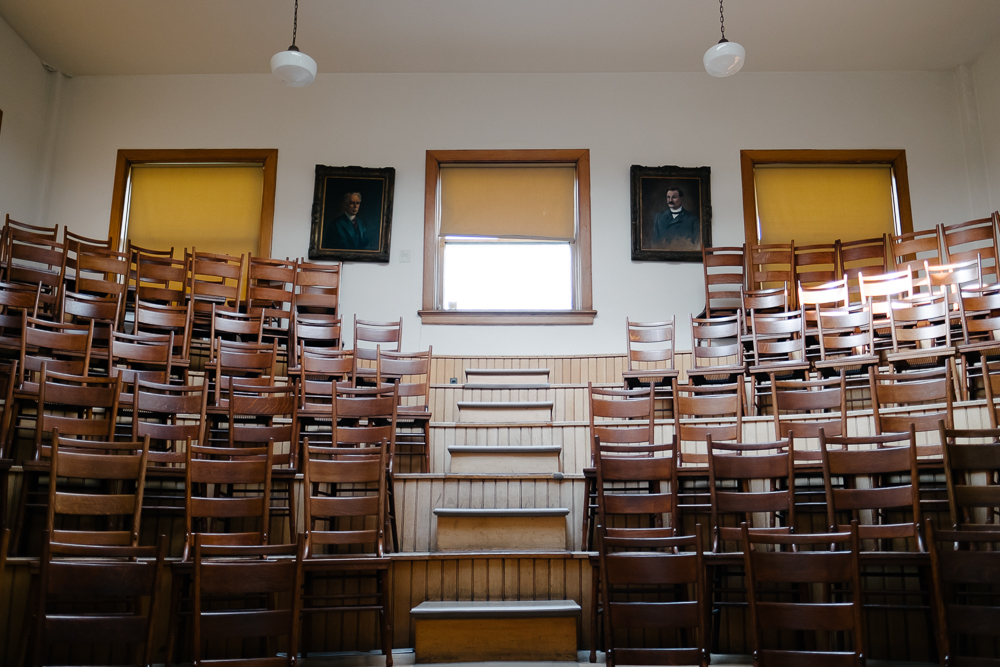
The teaching amphitheater is beautiful, one of my favorite spaces in the museum–not least because it made me feel like I was stepping into The Knick.
The tiny morgue, which sits just outside the autopsy room. As part of the hospital’s research mission, deceased patients would be autopsied to search for any physical clues to the cause of their mental illness.
See that pipe to the left of the window in the autopsy room below? It’s a dictation tube that the doctors would use to dictate notes to a stenographer located in the records room above. We couldn’t take photos in the records room due to privacy concerns, but it is filled with beautifully handwritten and very detailed records of each autopsy.
An infant size iron lung–obviously not something that would have originally been in this room, but now displayed here as they’ve acquired more medical equipment from other area hospitals to expand their medical collection.
Old, stained tissue slides, used for both reference and research. Some diseases such as neurosyphilis were easy to identify in patients since they would have specific physical markers the doctors could identify. Others like schizophrenia did not exhibit physical traits that the doctors could identify using the tools they had available at the time.
Bottle from the many chemicals and compounds the doctors used in their research.
Cobalt glass apothecary cabinet. The dark glass protects the potions within from light damage.
Looking down onto the teaching amphitheater from one of the two upstairs balconies.
The doctors began using photography almost immediately, both for research and education. They even had their own darkroom!
An infant skeleton on display in an upstairs library.
Pearl Jam, anyone?
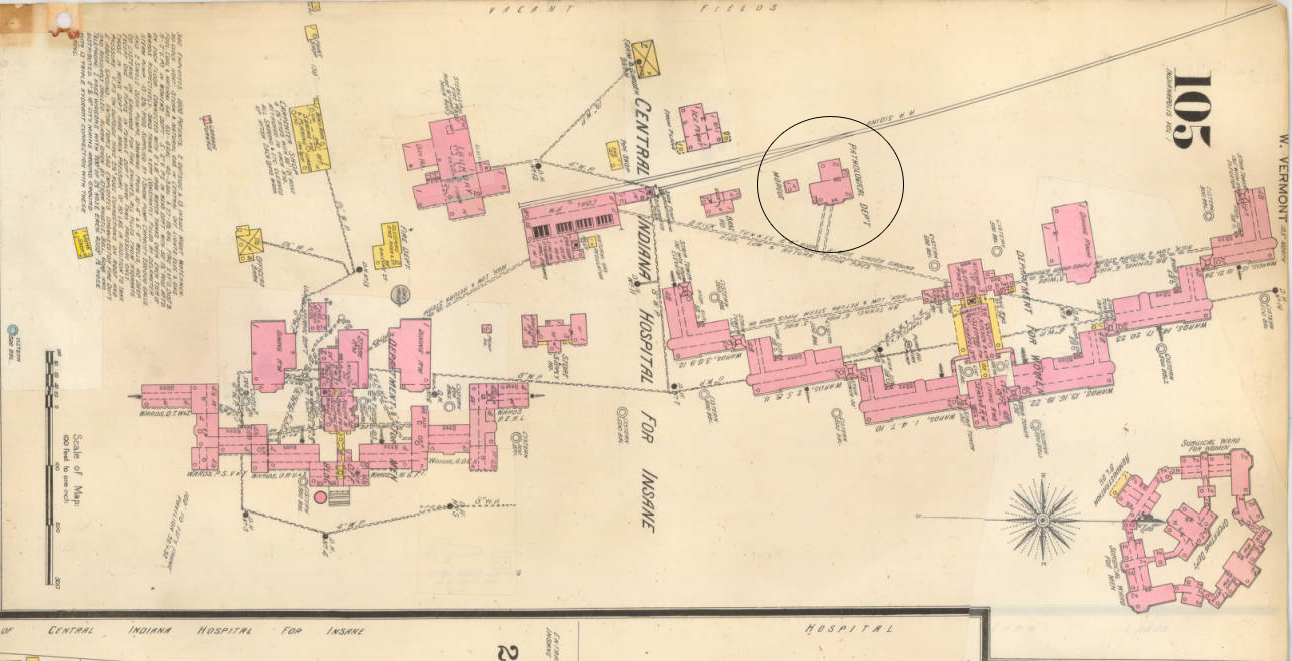
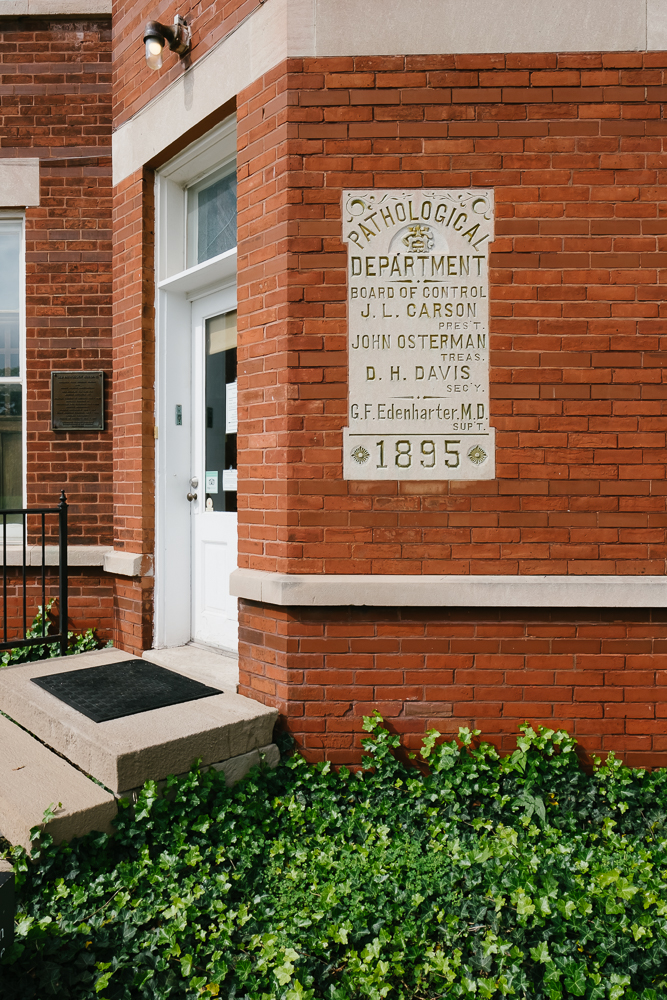
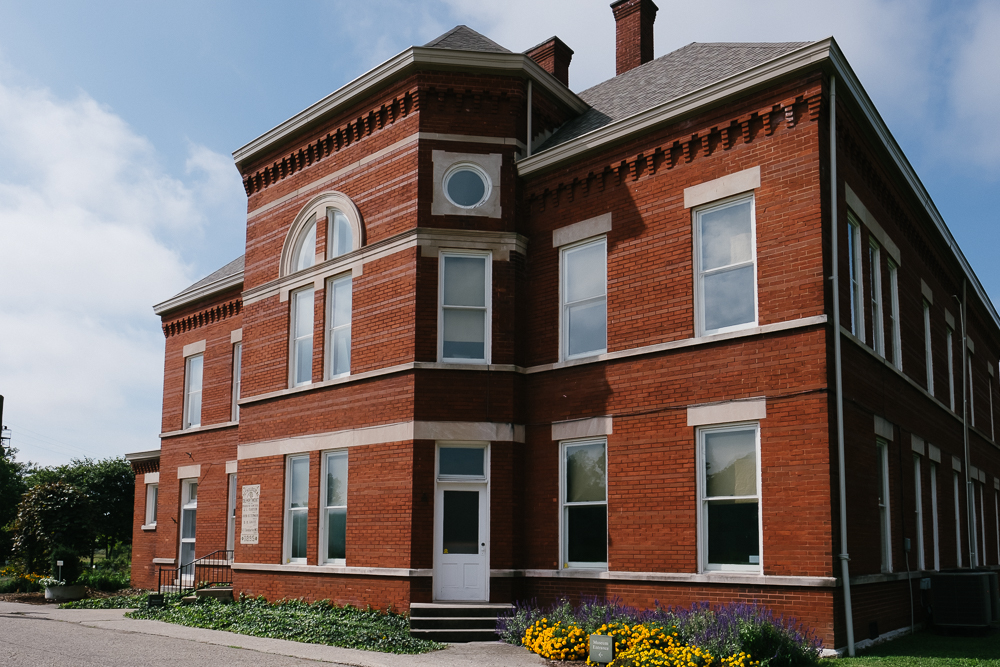
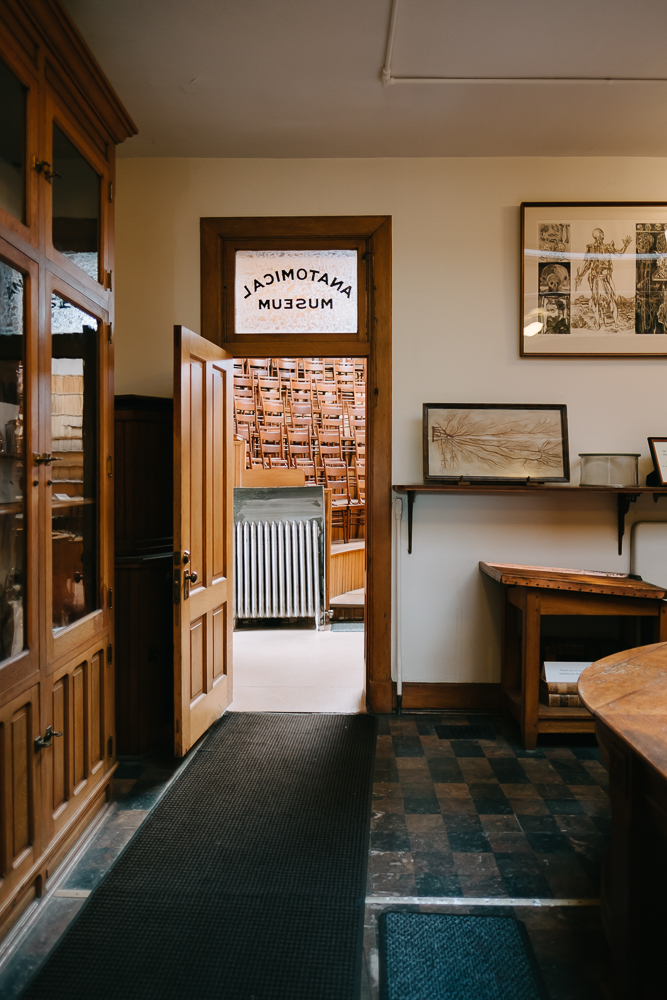
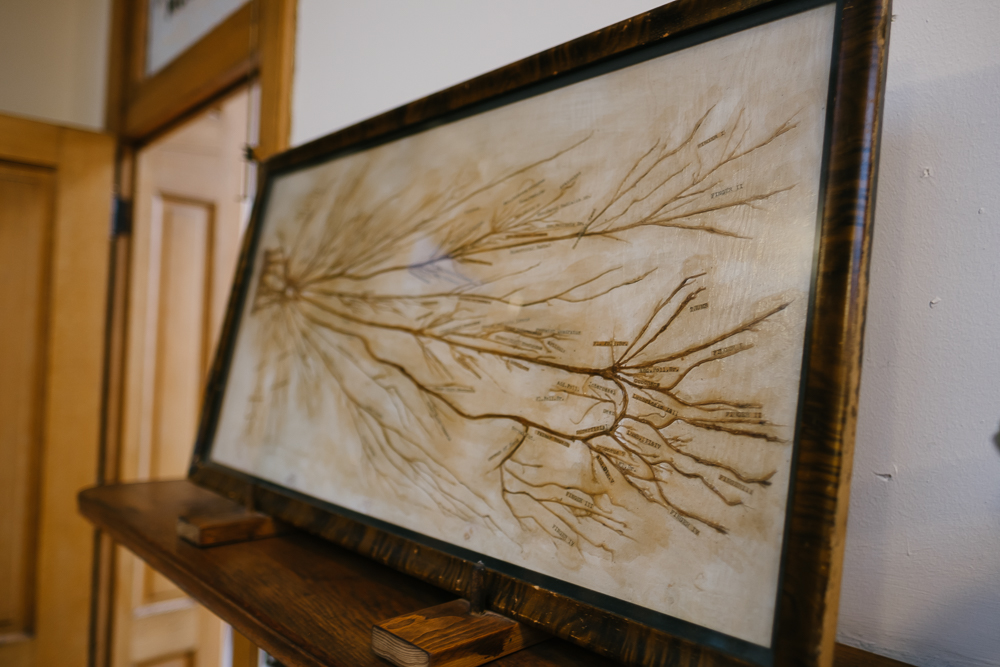
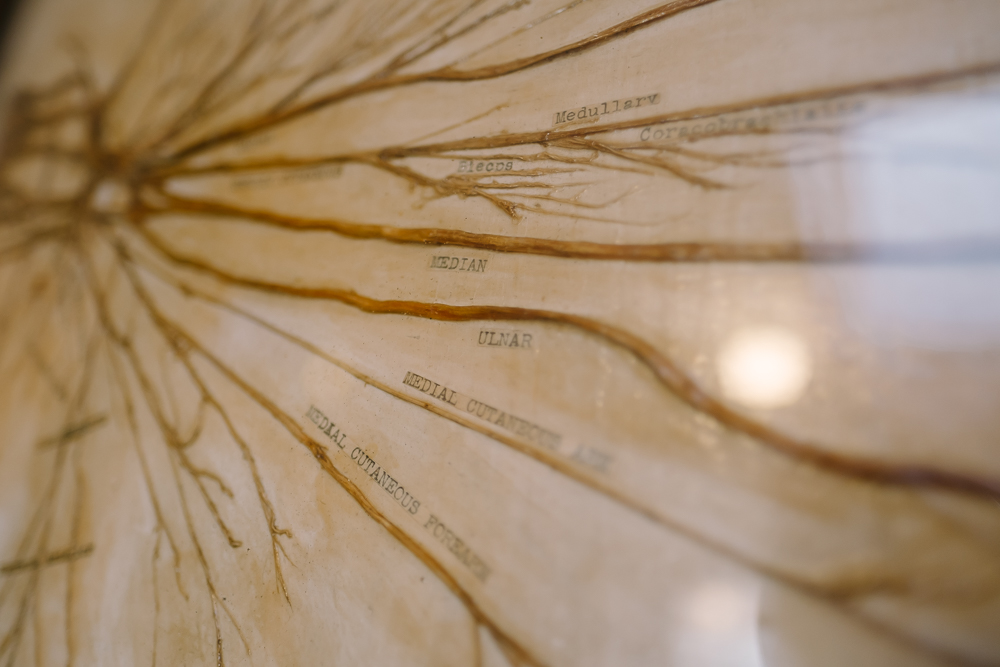
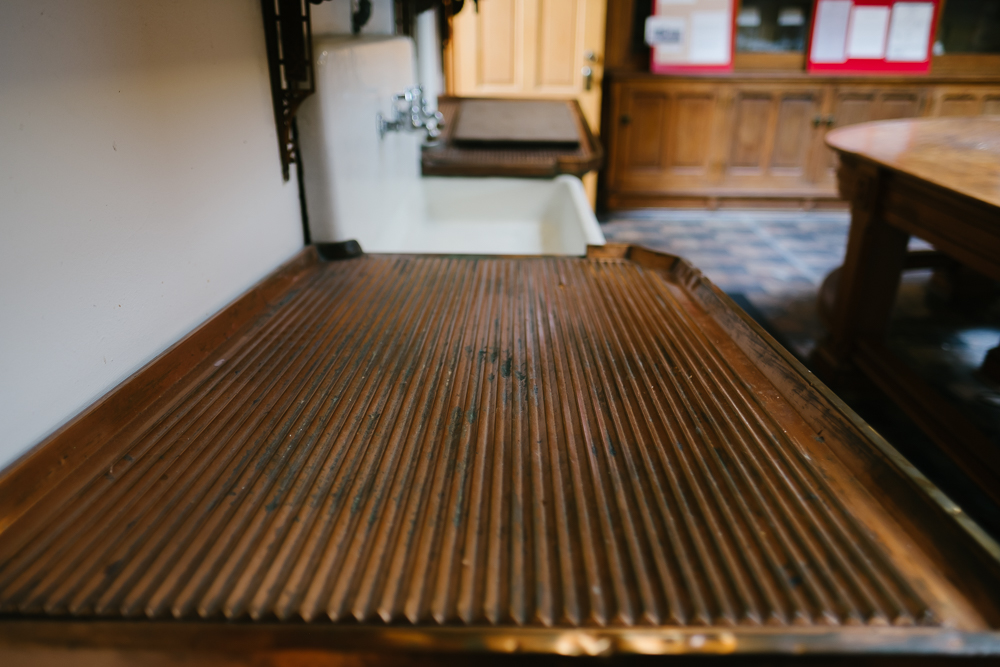
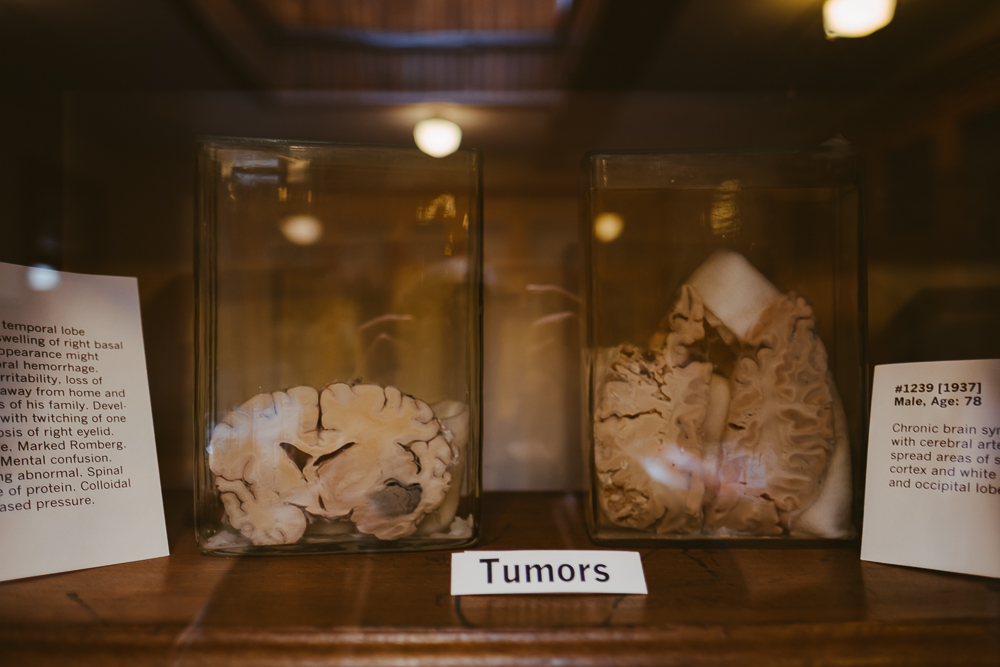
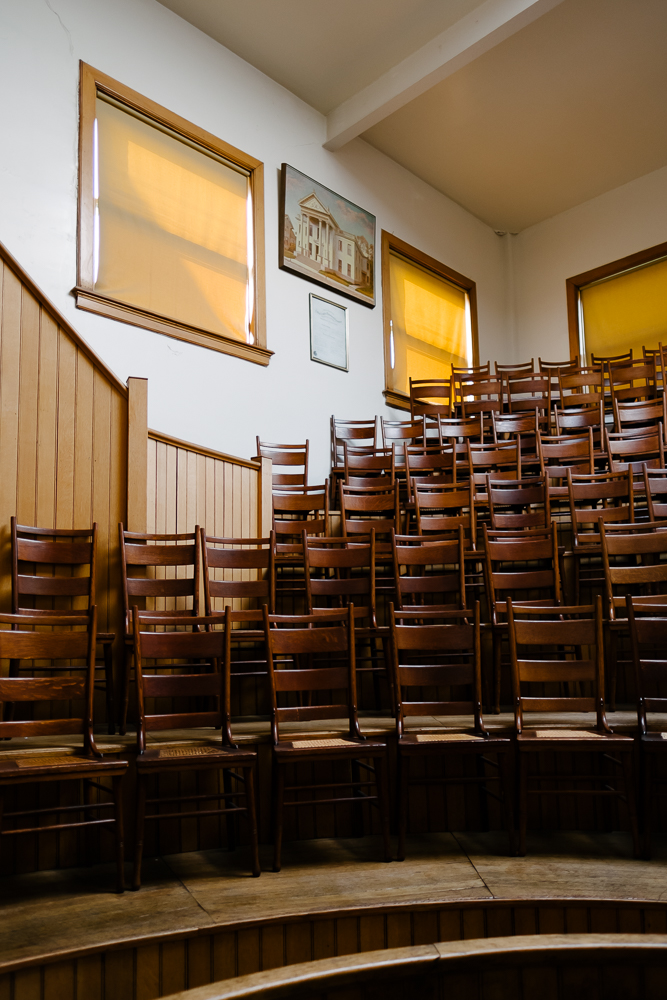
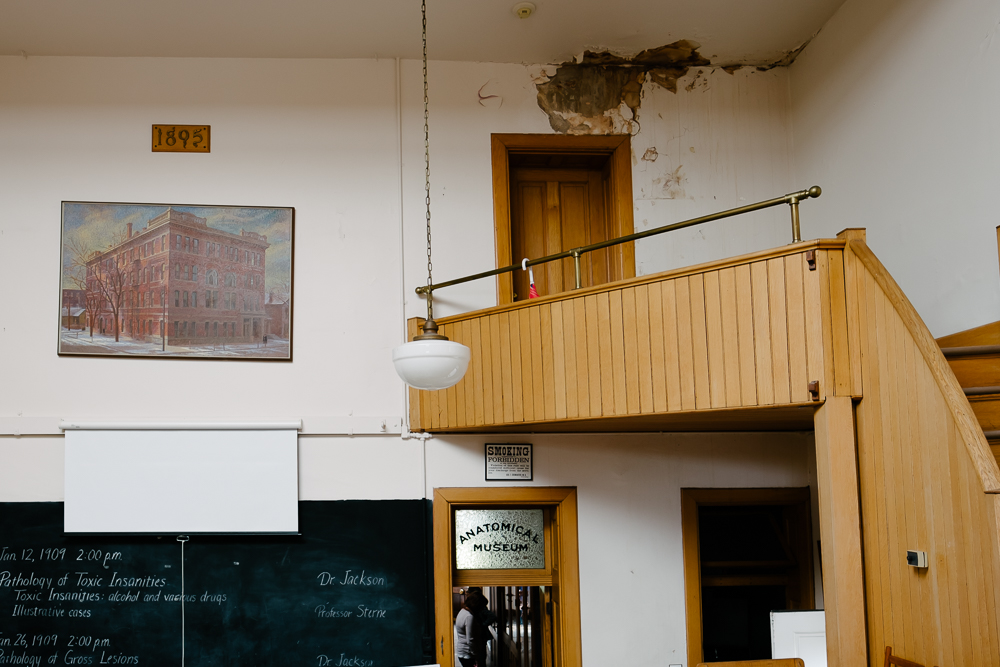
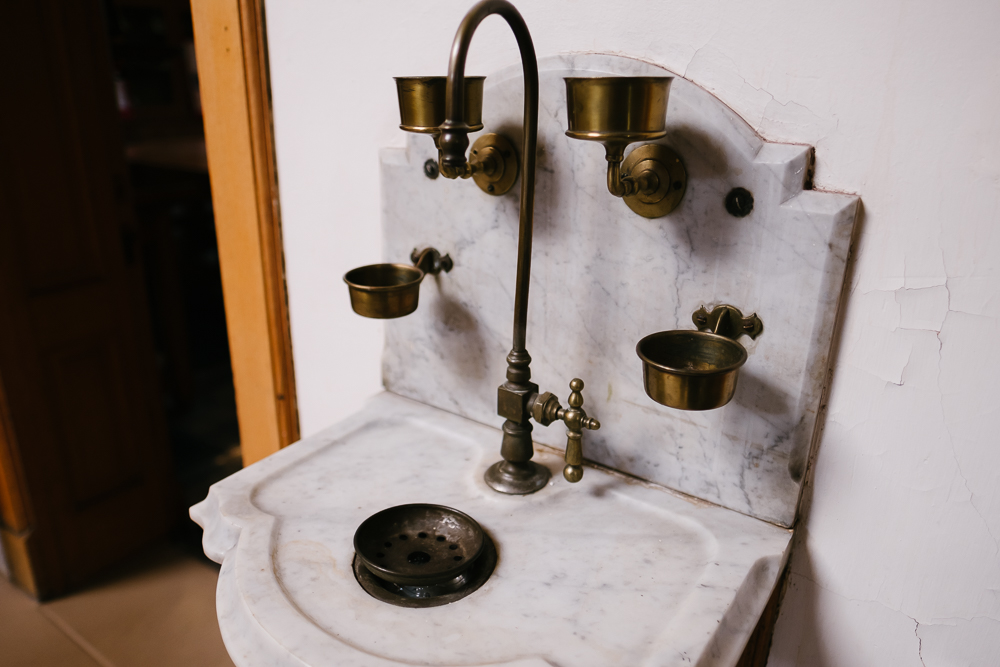
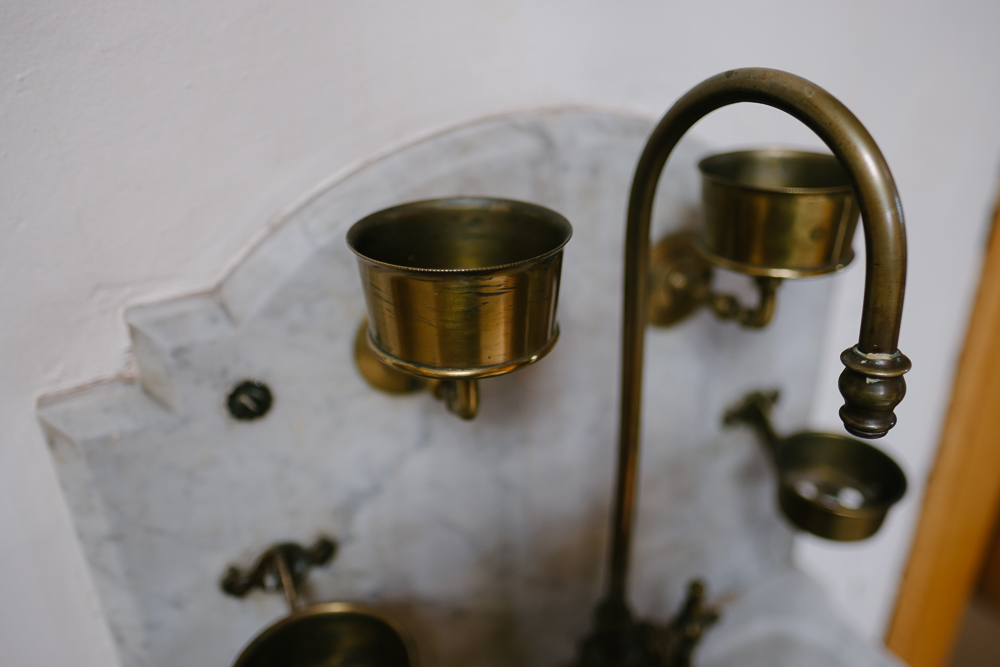
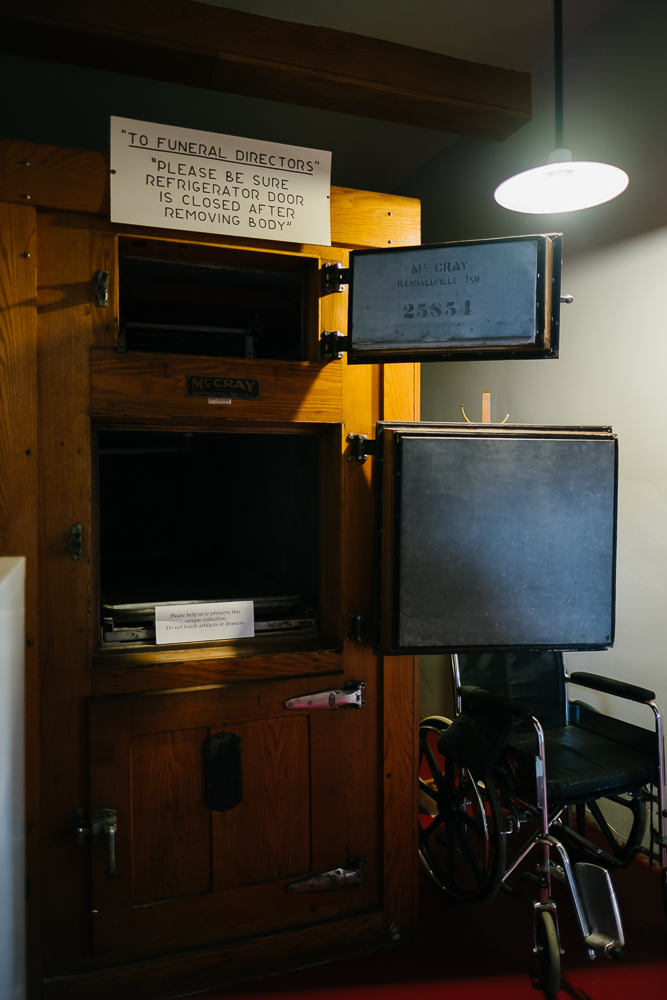
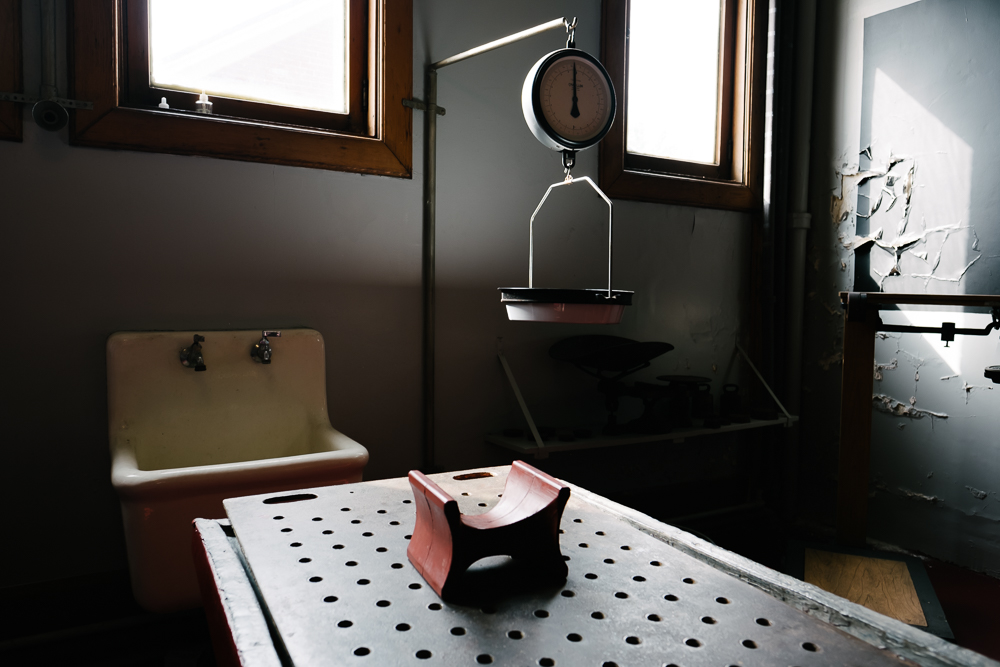
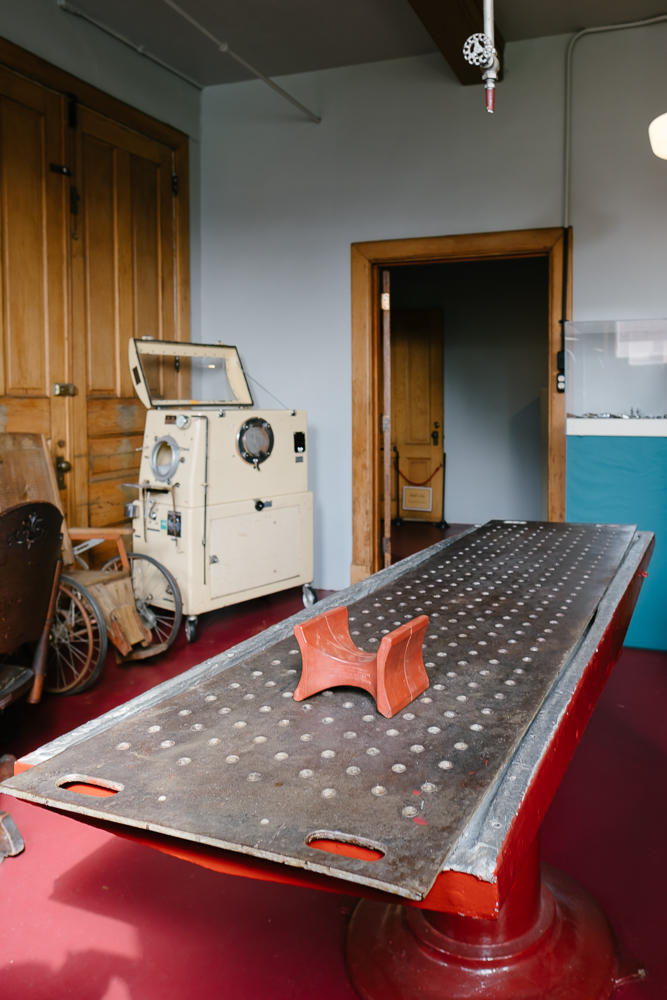
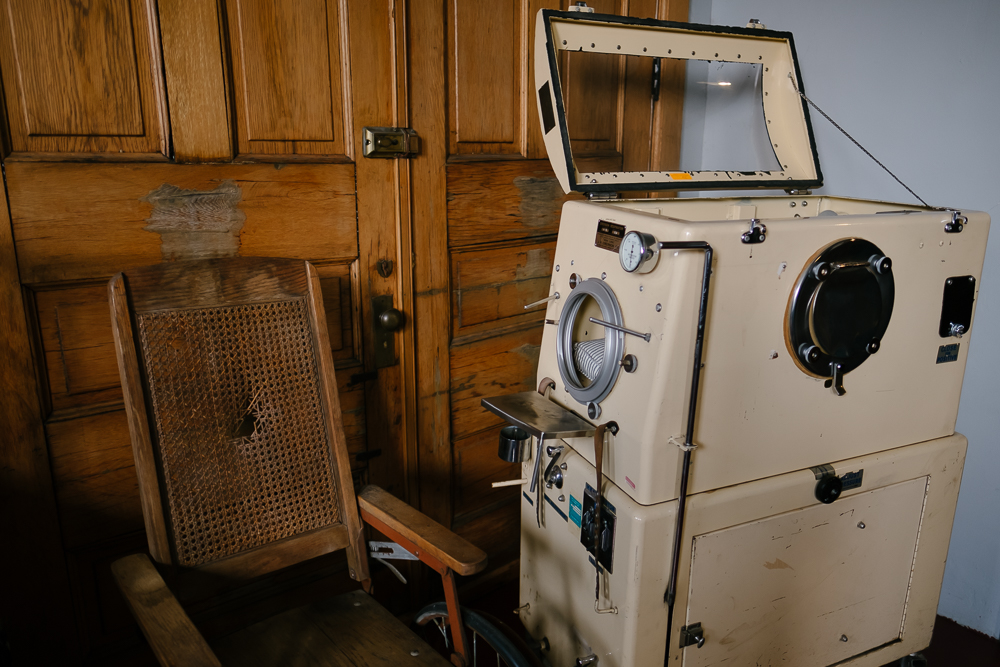

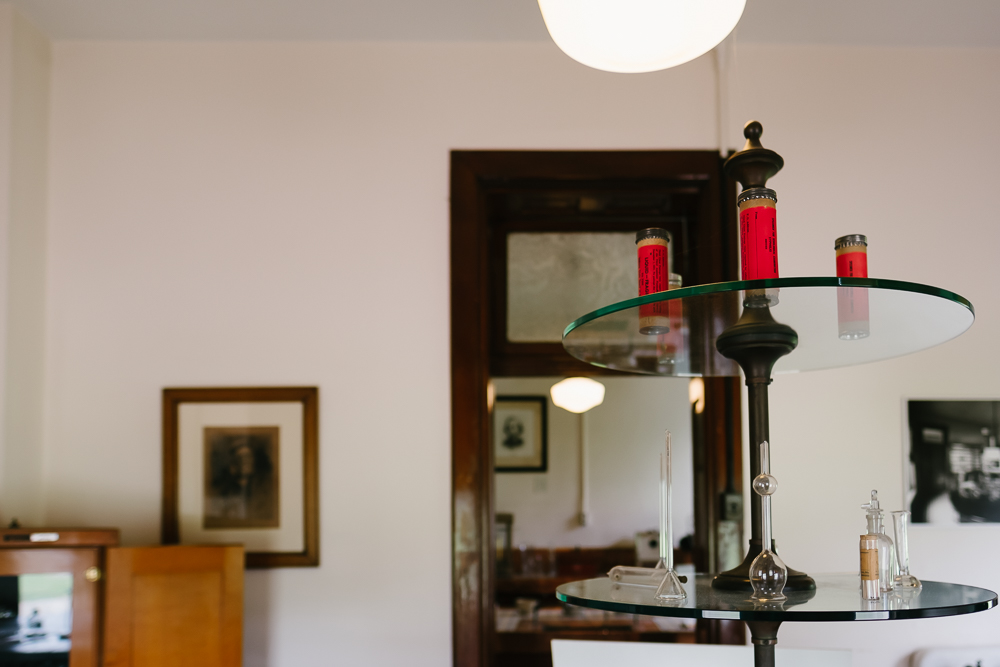
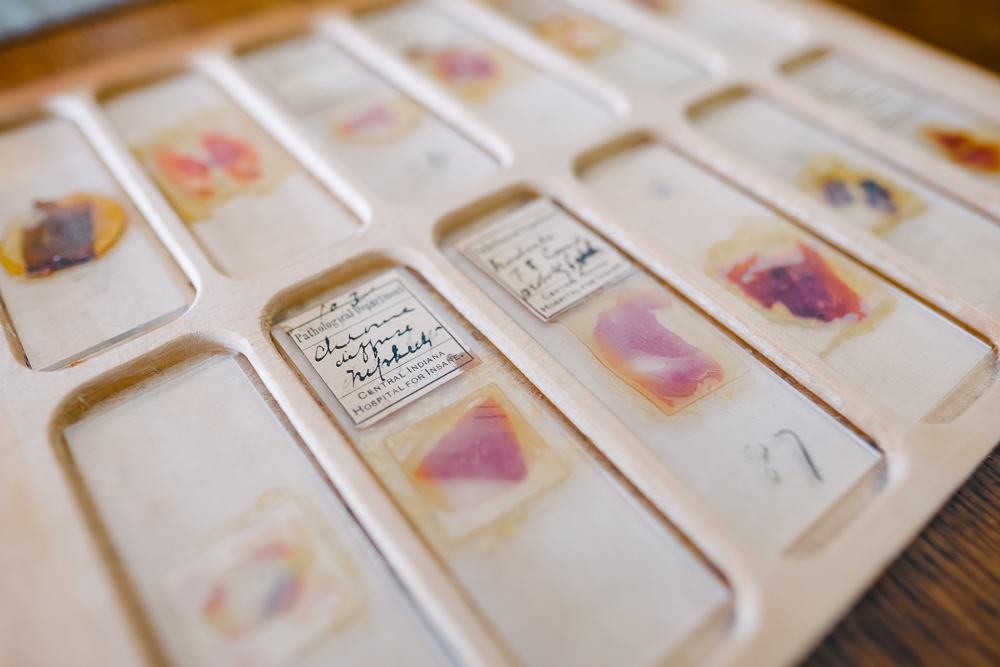
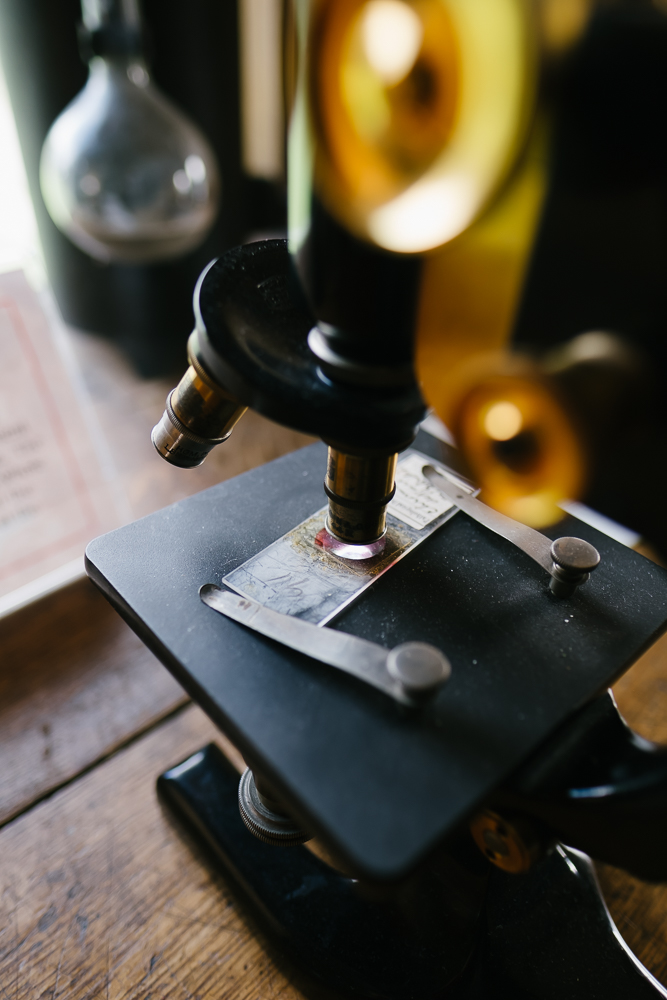
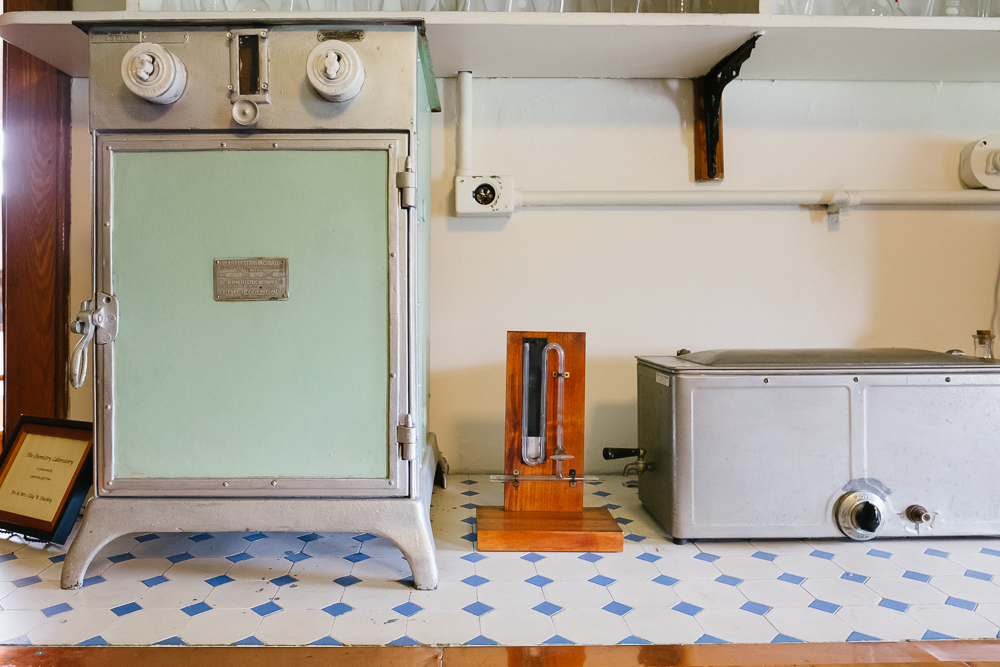
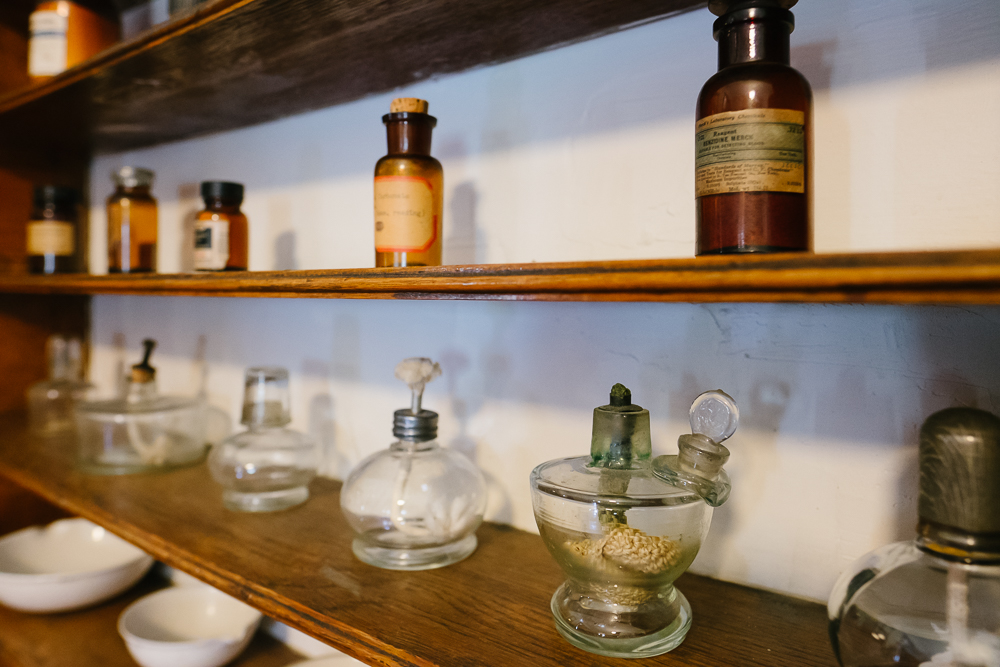
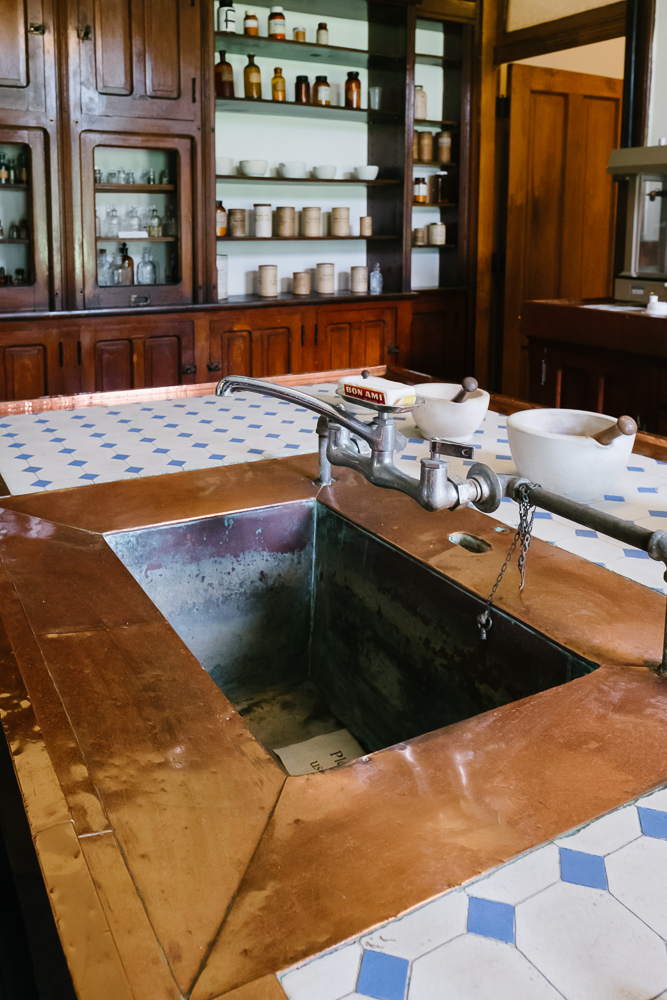
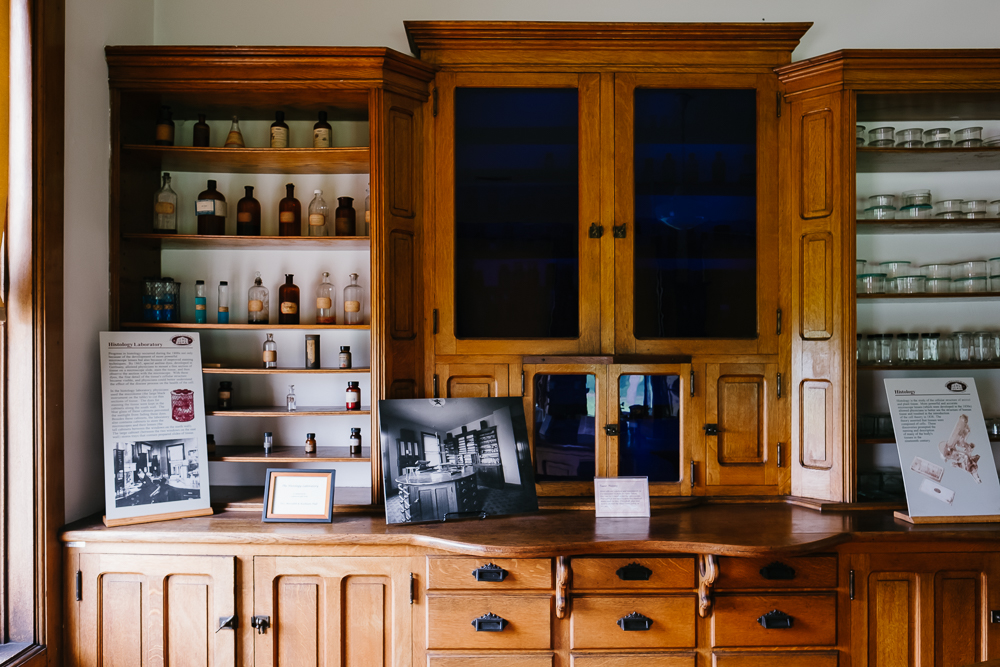
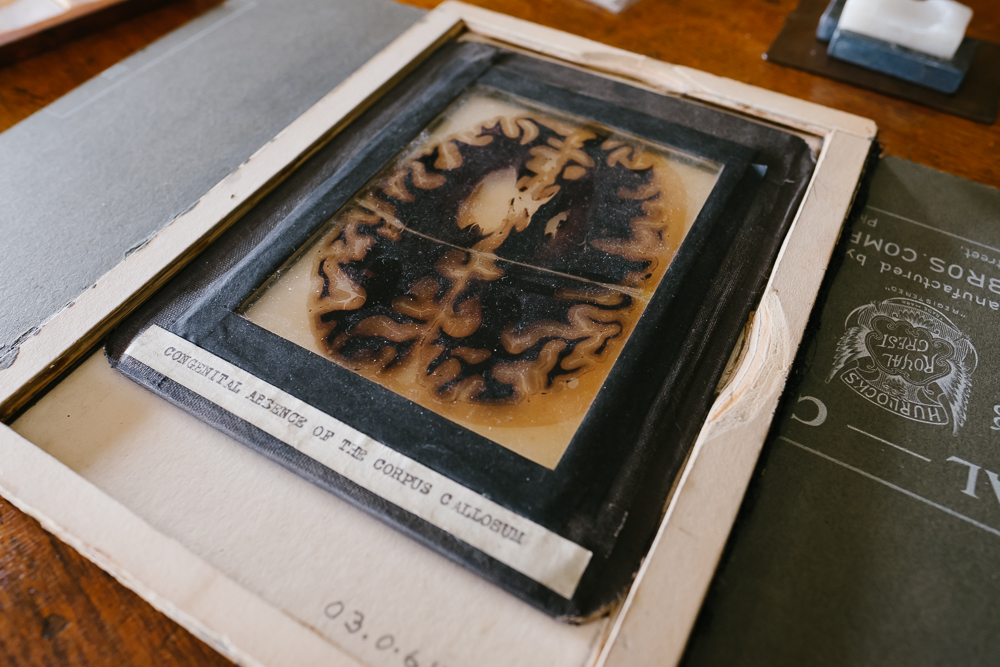

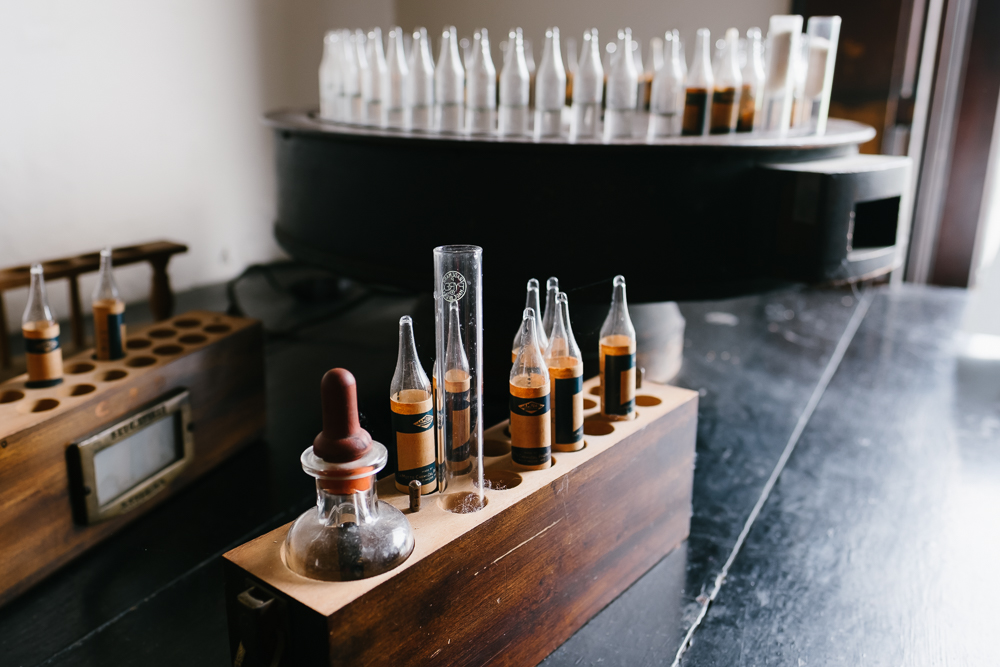
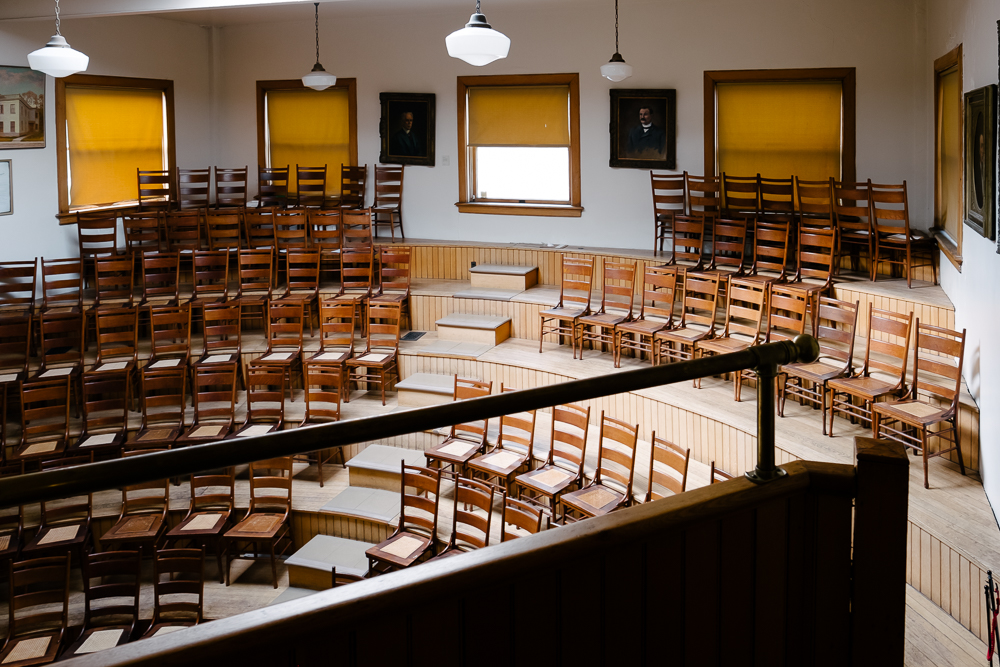
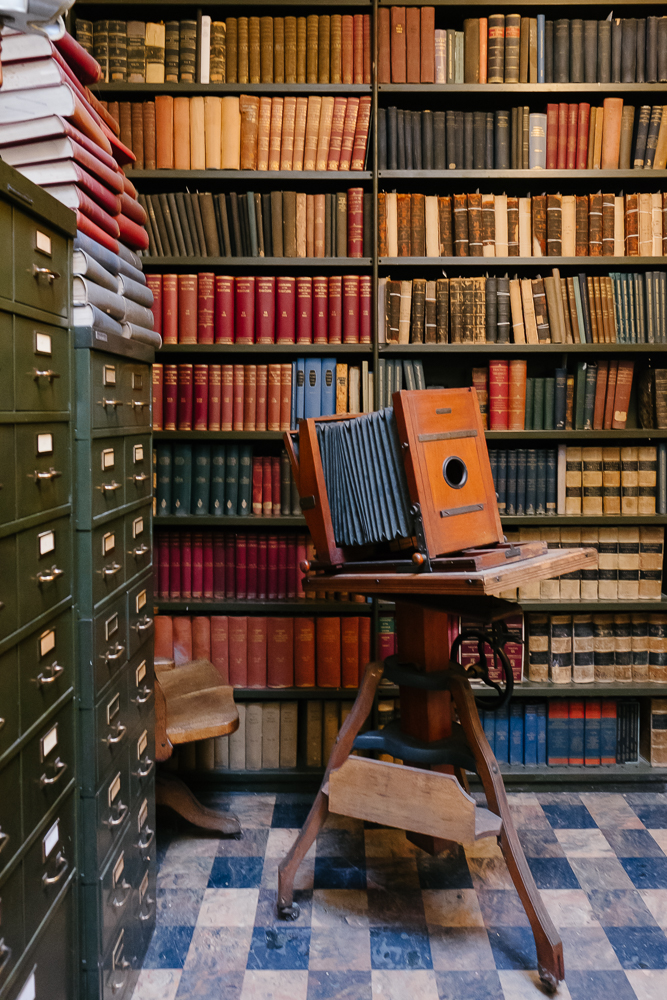
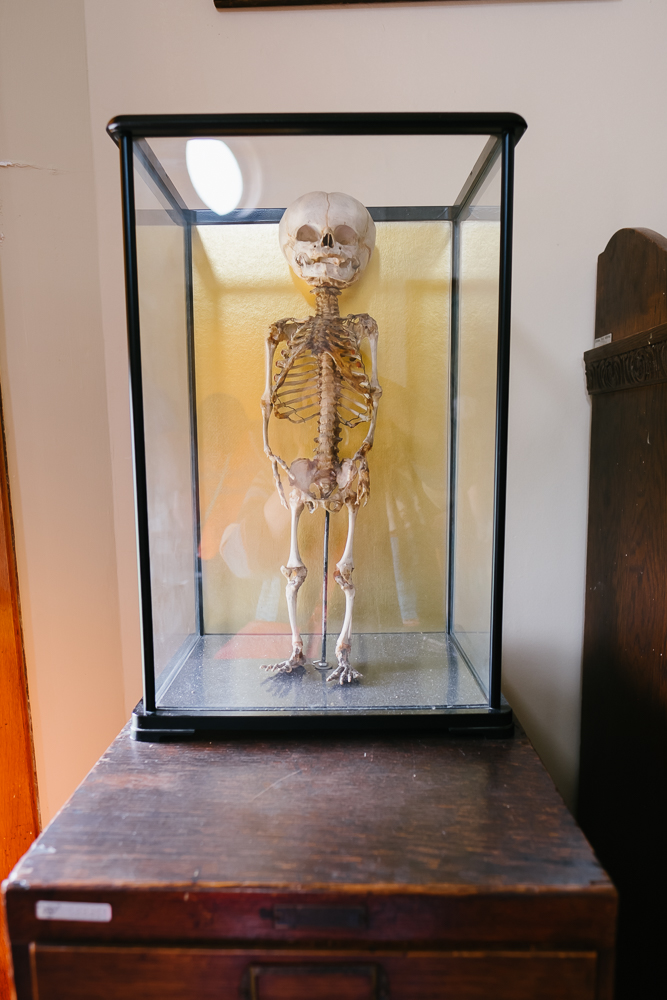
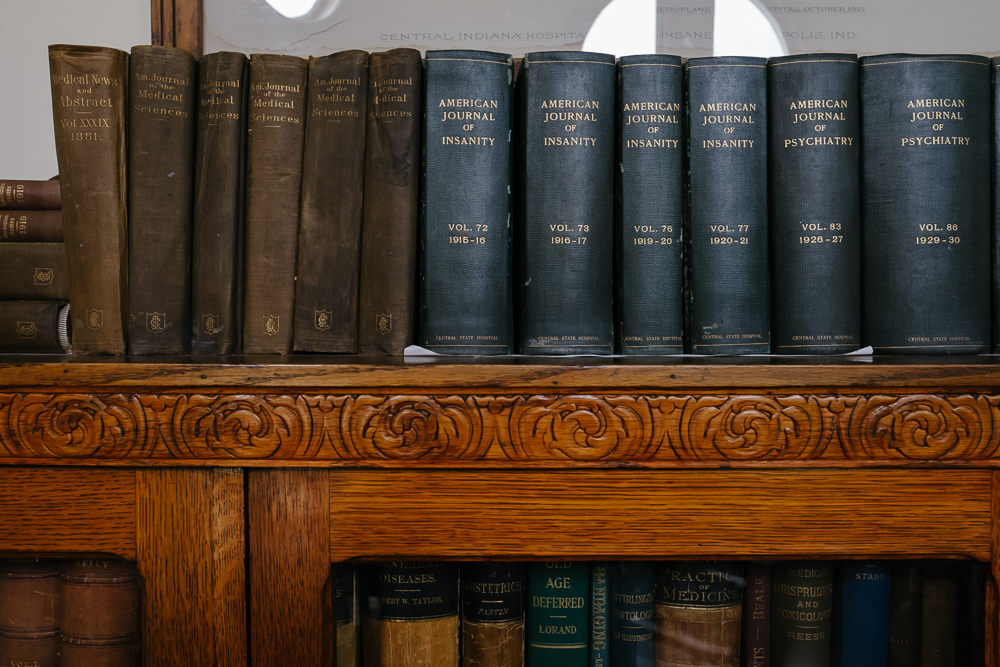
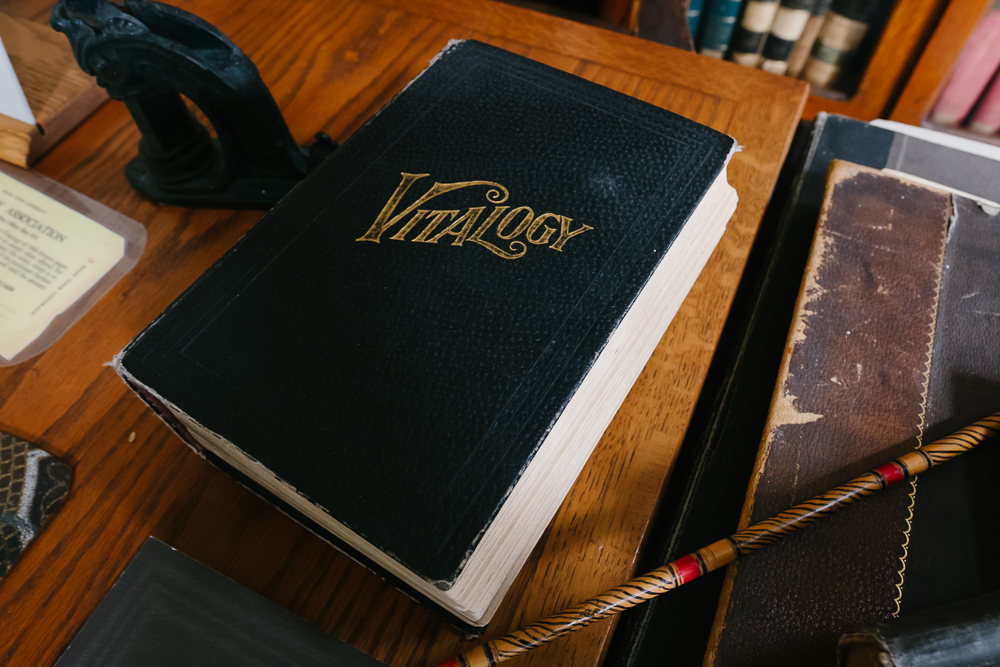
I live in Indiana and I have been here twice! It’s such an interesting place to visit. Not to mention all the abandoned buildings around the site that once housed the patients. It’s a bit eerie.
I could totally see coming back if I lived in the area, there’s so much to take in at the museum alone!